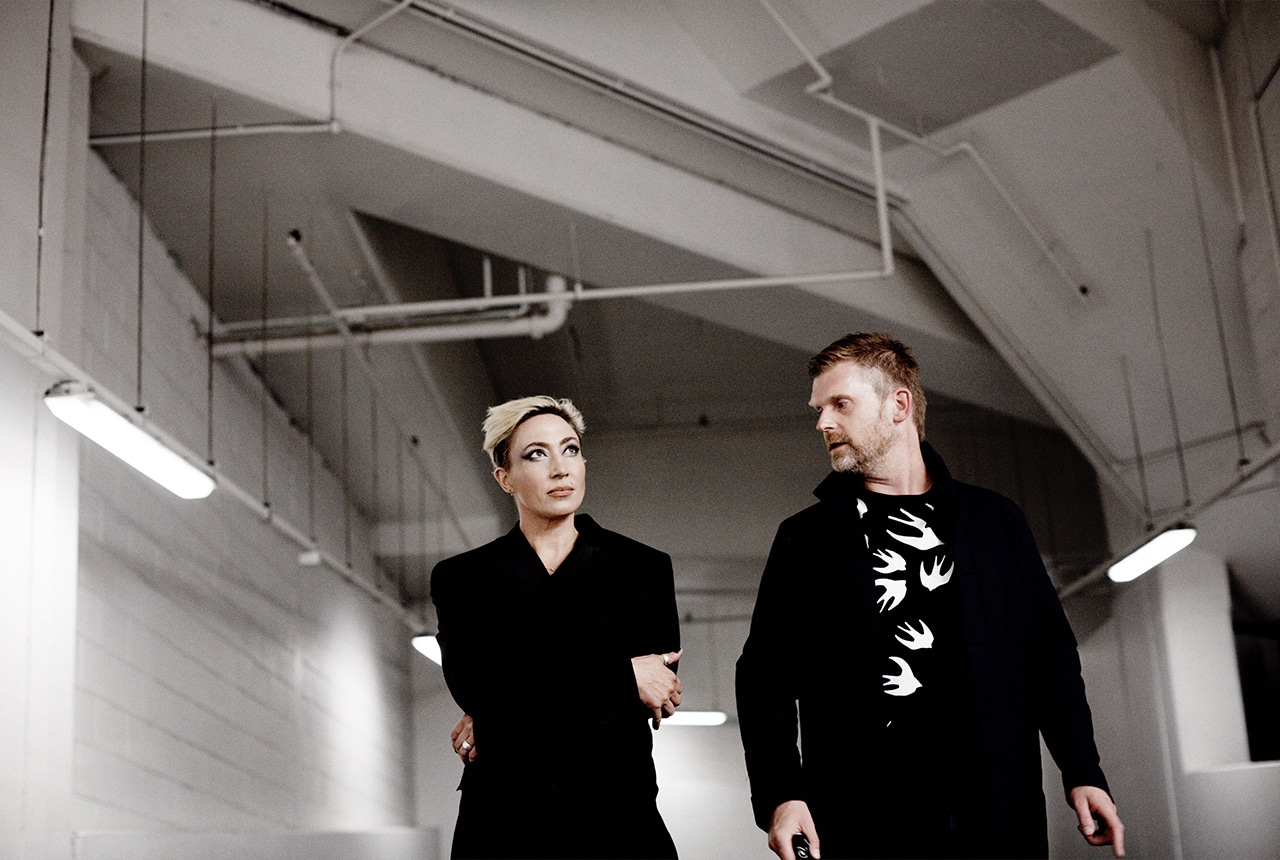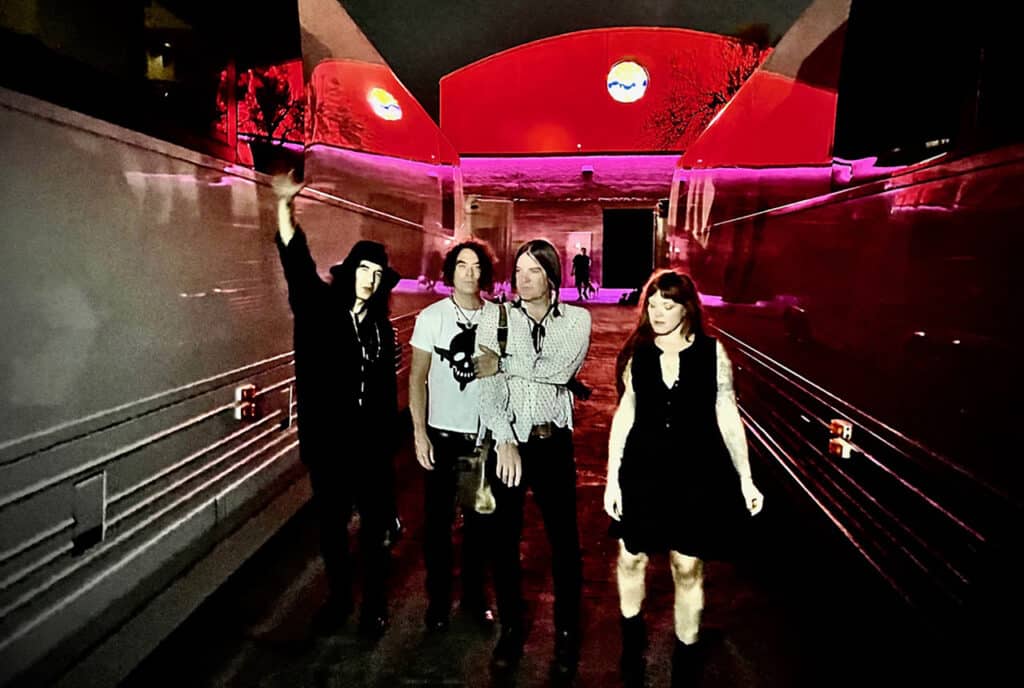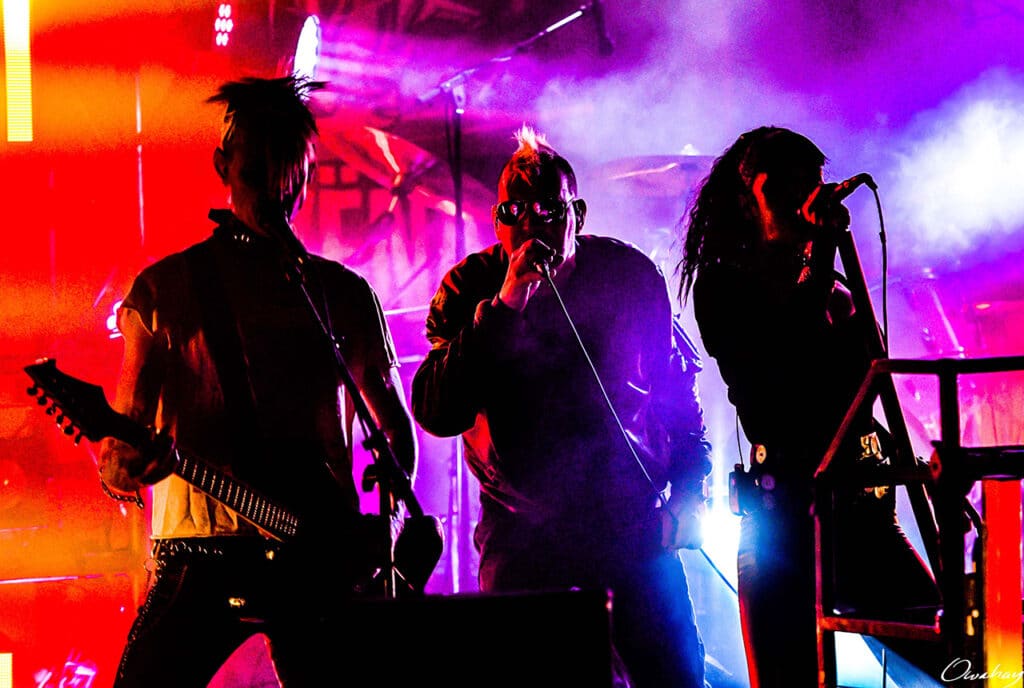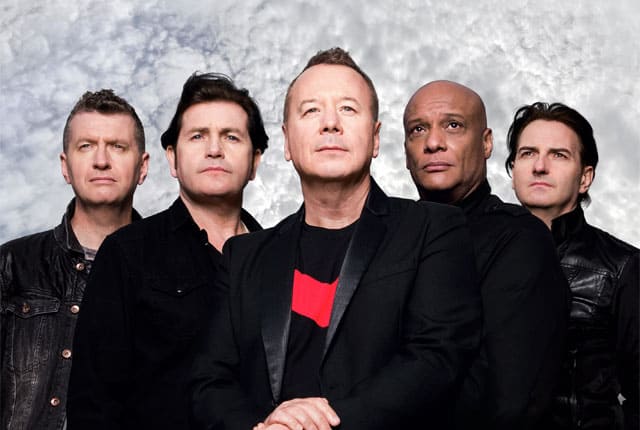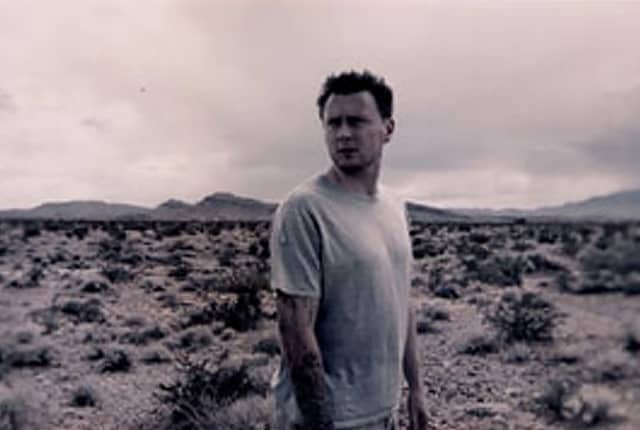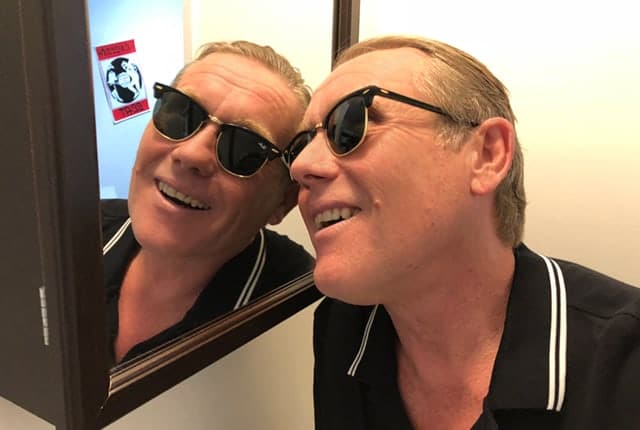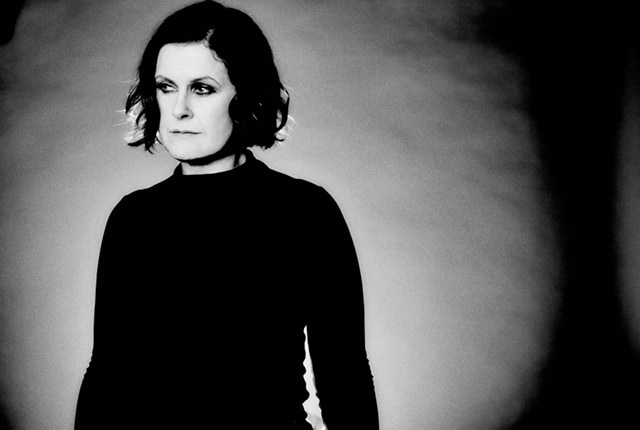British electronic band Hybrid has always brought a cinematic feel to their music and is well established in the film scoring industry. So it comes as no surprise that the group has been unleashing a series of intense, sci-fi-oriented music videos for their new Black Halo album. The first single/video, “Flashpoint,” came out in late March, and was followed by “Nails” and “Sky Full Of Diamonds.” The pandemic forced them to improvise with the logistics in making them, but the results have been breathtaking.
The core of Hybrid is Mike Truman (sound design, producer), who was one of the founders in 1995, and Charlotte Truman (vocals, piano, synths, guitar), who joined in 2007. They’ve been part of many interesting collaborations over the years, like when Peter Hook added his distinct bass playing to “True to Form” (2003) and Julie Cruise supplied vocals for tracks on the Wide Angle (1999) album. Their film work ranges from Interlude In Prague (about Wolfgang Amadeus Mozart) to various entries of the Fast & Furious franchise. Hybrid is rounded out by Stu Morgan (vocals, guitars, bass), and Simon Hanson (drums, percussion, backing vocals).
You’ve put out really interesting videos from the album. Could you discuss those?
Charlotte: “Flashpoint” is like the opener for the album. So we wanted to use that as a sort of precursor to what’s going to happen in the future. And then we started working with a chap name Matt Westrup. He’s done all the final scenes of the movie, which are all CGI. All of it [the CGI] is completely made by him. Because of lockdown and everything, we had to go and use as many things at hand as we could, without going to contravening lockdown regulations and all that stuff. So, we’ve got a friend who owns a farm, not far away from us. And we used her barn. That’s got the big milling machine inside it. And we used her cellar, which has got all the bottles lined up. But then after that, Matt was just CGI’ing the shit out of everything. And it was just amazing.
Mike: We were in the center of the second lockdown in the UK, I know it’s been different in different countries. We were trying to rent things like farmhouses and kind of dilapidated old country houses and things like that to actually shoot in. And no one would let us do it. So we had to get creative with how we could do it and where we could do it. We did find a local railway. We called tons of different people to see if we could kind of do these things. So we made up a lot of the scripts and a lot of the ideas and adapted kind of as we were shooting. But I think it took about two months on and off. It was quite involved, with a lot of locations.
Charlotte: The railway, that’s a funny one because we turned up …
Mike: It’s an old branch line. It’s a proper Victorian; kind of beautiful awnings. It got decommissioned in the fifties or sixties, but they now turn these different places into B & Bs or Airbnbs.
Charlotte: We rang up and said, ‘Would you mind if we did some filming there?’ Because they were just running an Airbnb-type thing. And we turned up and nobody was around. We knocked on the door and this little old man came to the door and was, was like, ‘Um, hello?’ And we were like, ‘Hi! Just letting you know we’re here and we’re gonna do some shooting.’ He said, ‘Okay.’
Mike: We thought we’d just basically bumped into one of the locals who wasn’t quite altogether there.
Charlotte: We said, ‘We’ve got the insurance and everything.’ He was like, ‘O … kay. Right.’ As we were setting up to record, the lady who actually ran the right place we were supposed to be in rang and said, ‘Where are you?’ And we said, ‘We’re right here.’ She said, ‘No, you’re definitely not here.’ And we said, ‘No, we are, we’re on the railway right here.’ And she went, ‘No, you’re on the wrong one.’ Apparently, there’s two identical stations about 10 miles away from each other.
Mike: But we were so brazen, kind of like, ‘No, we’re filming here this afternoon and here’s the documentation and the guy was like, ‘Fine, carry on.’ We got the right one eventually.
Charlotte: It was quite funny.
Mike: We just had to, through necessity, move around and adapt a few bits here and there. But when we were working on the album, we wanted to have a series of short films. And the third one is going to be about 15 minutes worth, and that kind of summarizes it all. We’ve been doing our own videos since 2010, and it’s my sort of hobby; the cinematography and getting the right lenses and kind of collecting little bits of lighting equipment and bits and bobs. And it’s great. It goes from when we were shooting covers for the albums and for the singles. It’s kind of an extension of that. And with technology being so powerful now, with one iMac and some SSD drives and a 6k camera, and you can come up with some pretty cool stuff. But we wouldn’t have been able to do it without partnering up with this chap Matt.
Charlotte: He’s incredibly talented. He just happens to be a Hybrid fan and he’s collaborating with us a hundred percent and it’s just absolutely incredible, the stuff he’s coming up with.
Mike: It was a very easy kind of working relationship with him because he just used to message us. He was really supportive on social media and on Instagram. And then we started checking out what he did and then got on a call with him and then sort of swapped some ideas around then six months later, came back to it. So just through talking to somebody over social media … we hadn’t actually met. But it’s cool, it’s surprising the contacts we’ve actually made. And during the pandemic, it’s like people were having to sort of wave at each other through emojis. It’s lovely. It’s kind of brought lots of things together. And with a lot of producers, we got to know a lot more people over the pandemic just because everybody’s at home. So we’ve got on Zoom, chatting with people and we’re going to do a lot more collaborations.
Charlotte: Rather than speaking to producers that are flying all over the planet all the time, everyone’s been in a fixed state. So it’s been … it’s been obviously bad in the lack of live opportunities and stuff like that. But in a kind of good way, it just meant that we’ve actually gained some more kind of solid connections with people that we want to work with later on. And got better connected to people that are in all sorts of peer groups. So it’s been really cool.
As you’re writing and recording music, are you thinking about what the accompanying videos might be like?
Charlotte: Yeah, I definitely do. When we were writing the album, it was coming up with the story for the videos at the same time and how that might work. So it’s almost backwards scoring, I guess, because you’re writing songs, but then you’re trying to make the movie in reverse, whereas you’d usually make the movie and then write the music on top. So yeah, it’s cool because it gives you loads of visual ideas. And on this one we wanted to actually write a short story for it. So an actual story that goes alongside the theme of the album. And we know that albums are kind of being released differently nowadays. You don’t just slam your album down and go “tadah!” Now you release various bits and pieces; releasing one single and remixes and radio edits and all that kind of stuff within sort of six week intervals, and then dropping the album so that we can stay present on all those sort of streaming services and all that kind of stuff. It’s different now, but at least we get to release the album at the end of it, which is great.
Mike: I think that, visually, I might not have a scene in mind, but it’s more of a kind of a feeling. Like the start of ‘Flashpoint,’ because it had that kind of strange melodic change on the arpeggiated bit at the front, we kept thinking of forests and [it was] kind of very overcast. And we had a few visual ideas for one of the main visual things that you see in sort of the third video. But it’s generally kind of like feeling and mood, and then when we’re shooting, we bounce off that. So we know that should have sort of a creepy or magical kind of feel to it. Or leaning in more of a thriller kind of vibe. And that was in mind while we were writing it. So I think the two kind of work in tandem.
Charlotte: Another thing is that when we were writing the album… for ‘Flashpoint,’ we wanted to have like a dialogue, a kind of narrative that went through it. Previously we’d been approached by an author called James Scudamore, who wrote a book called ‘Wreaking.’ It was brilliant because he contacted us and wrote us the most amazing letter about the fact that while he’d been writing it – and it’s all set in an abandoned mental institution, broken down in bits and really dilapidated – he was listening to ‘Disappear Here’ and he wanted to… he sent us the book and said that the music kind of inspired the way the book went and his sort of headspace while he was writing it, which was amazing. So we asked him if he would listen to the album and come up with an idea for a sort of introductory monologue, which is what you hear on the start of ‘Flashpoint.’ That kind of modeled the rest of the ideas for visual aspects, just by what he came up with and how he perceived the album and what it was kind of saying.
Mike: And then it was a friend of Charlotte’s from being on a film set for Interlude in Prague, this chap Edmund Kingsley, Ben Kingsley’s son, who did the opening monologue. He’s got the most wonderful English accent, and he’s a really lovely chap. We talked to a few different actors, but he was always the one we were, we were thinking about. And then we said, right, when we got the dialog back, “Could you video it as well?” He said, “Yeah, no problem.” So he basically did it upstairs on his iPhone. The quality was a bit crappy and a bit low-res. We couldn’t really use it as a talking head. So we digitized it, and once we digitized it, we thought we can have this appear as being broadcast, which kind of worked back completely with the idea that we’ve got for the next couple singles.
Charlotte: It just ended up with this kind of alien-like. It was like from Prometheus.
Mike: Yeah. It’s like a David from Prometheus, a slightly robotic androgynous sort of feel, but he’s got such a lovely voice, and we accentuated it with distortion and kind of effects to make it feel a little bit off-kilter. But yeah, it’s nice to have that visual outlet that we can make these ideas kind of put together.
Charlotte: We sort of do videos the way that we write music; you start off with some solid place. But then we’re quite flexible to move around it and build on what we get. It just sort of comes together in quite a natural way in the end.
Mike: Yeah. And the way that we make music is very much like that. One track will start there, but it will become that. And then it will go into there, and then we’ll nick the bits from there, then that goes on there. And you’ve got this new thing on there, and then it becomes something else. It’s assemble/disassemble. And it’s nice doing it that way, but we go back through earlier versions, and you have to sift through and remember where the ideas came from, and then something that you did early on that track becomes the main riff on a different one. And it’s very much this sort of movement that goes around. It infuriates the record label. They’re like, “Oh, you had something else last week.” Well, it’s this today. Until it’s mastered, it’s flexible as far as we’re concerned.
What made you pick “Flashpoint” as the first single from the upcoming album?
Mike: So I think “Flashpoint” was a bit of an unusual choice, normally we’d go with the biggest song on the record. But we thought it fit with the tone of the idea that we had [for] the short film. And also now we’re working with Stuart Morgan and Simon Hanson, old friends of ours who are both multi-instrumentalists. We wanted to push them kind of forward and just make it absolutely clear it is more of a band effort than just kind of a studio production.
Charlotte: Stu is kind of a born-again Jimi Hendrix. We keep having to ask him, what was the date of Jimi Hendrix’s passing? And what date were you born? Because there’s something weird going on [about] it. It’s like he’s using the force of Jimi Hendrix.
Mike: He’s got a very bluesy, sort of rocky kind of way of playing, but then he’s still a huge fan of electronic music. So for him sort of working in those kind of parameters… same as us, we always love electronic and rock music, but the combination of kind of a fine line in between.
Charlotte: We’ve always used guitars.
Mike: And Simon, Simon plays with Squeeze, he’s Squeeze drummer. But he’s drummed for Death in Vegas. All kinds of people. So he’s quite happy somewhere between rock and electronic and kind of anywhere in between.
Charlotte: He comes up with the most amazing riffs that we would have never thought of. It’s another person’s input that gives you like a springboard to bounce off more ideas that you’d not necessarily have come up with on your own, but it just gives it a really fresh feel.
Mike: Yeah. It’s more fun with that as well. Because you get inspired by which way everything’s going to go. And Stu sends us guitar parts. We send him a half-made track, and then he’ll send back 20 layers of guitars. And quite often, it’s literally pushing the fader up and it becomes something brand new. We would never have done that ourselves. So it’s nice to be pushed in different directions, because it’s been me and Charlotte for ages. So it’s really nice to have that extra source of layers and musical and rhythmical ideas. So it’s great. It’s really good for us.
Charlotte: The guitars on this one are really in your face. It’s really like, whoa. I remember when we played it to our friends for the first time and he wasn’t expecting it at all, and I think he almost grabbed hold of the mixing desk and went ‘”Where did that come from?!?” Confused in a good way. They’re both really great performers and really clever musicians.
Mike: The first time we got the four of us in the room… well Charlotte knew Stu from 10 years or 15 years ago from her previous band. I knew Simon from touring and festivals, 10, 15 years before. And we rang them both up individually. We said we’ve got a music video to do, do you want to come and play on it? Because it was more of a band-sounding track on the previous album. We were late by about three hours or something getting into London. And we turned up and we saw the two of them thick as thieves in the corner of the room, having never met before. So it was from that day on that we wanted to work with them as a band because it was so fun actually having them in a room.
Are you preparing to perform live in support of this album once things open up?
Mike: Yeah. We wanted to make our live setup very portable. So everything’s in a few flight cases, we’re completely and utterly self-contained apart from front of house. Just to make touring and traveling a lot easier. So now we’re going to get into rehearsals basically as of next week and get rehearsing the whole album. We want to do an album playback from front to back basically. And then we’ve made the boys rehearse basically three hours’ worth of hybrid material. Just in case. For the last one, we did a two-hour show.
Charlotte: It felt like an hour. It just hits you as going so fast.
Mike: We’ve got practically most of our catalog ready to go. We’re looking forward to actually playing it [the new album] in a room.
Are you planning any online performances?
Mike: Yes. We’re tossing out whether to do a complete livestream or whether to prerecord it and make it into sort of a more polished, finished thing and then sort of broadcast that and chat with people online. So we’ve seen quite a few live streams, which are… it’s quite tricky, isn’t it? It’s like, you just need your internet to waver a bit, and you can lose half a crowd. So we’re working it out at the moment, but yeah, we’ll be playing live soon.
Charlotte: Even if we have to install our own satellite!
Mike: Yeah, it depends on the timeframe. Quite often, if it’s just for the album, we can probably do an album in six months, but it generally takes about a year because other projects sort of drop in and there are things that we really want to say no to. So we have little hiatuses of a week or two here and there.
Did you make this album in a completely focused timeframe, or were you working on other things?
Charlotte: This one has been different. Because of lockdown and the movie industry just going quiet for a bit we haven’t had that many of those kinds of gigs to do. We’ve had the fortunate sort of scenario that we’ve actually been able to concentrate on the album really quite fully this time, whereas usually we’d be going, “Oh, I’ve got to go and do this for them. And that for this.” We’ve actually been able to focus a lot more. So I think in that sense it’s quite more of a sort of cohesive piece of work, because we’ve been able to focus on it so much.
Mike: Another thing we couldn’t really do on this one so much was the orchestral sessions. So we got from all the times we recorded in Prague with different orchestras… well, the last time we overwrote, we wrote about 12 or 13 tracks, and used about seven. So we delved back into a lot of those. It’s not as orchestral, this one. And I think, I think it’s nice to have a break from it because I think 9 out of 10 tracks on ‘Light Of The Fearless’ had orchestra literally wall-to-wall on it. So it was nice to kind of give it a break and just use it in a few places here and there.
Charlotte: It’s still there, just not as much.
Mike: This one is a bit more subtle. But we’ll come back to that with a vengeance because we’ll want to get a room with an orchestra again. We’re fortunate enough, we get to play with them every now and again, which is great. But this one’s a bit more focused on the songs and the playing and the performances, which has been fun. It’s different. It’s a different tilt, which is nice.
For more info on Hybrid, visit: www.hybridband.com.
Purchase Hybrid music at: distinctiverecords.com.
